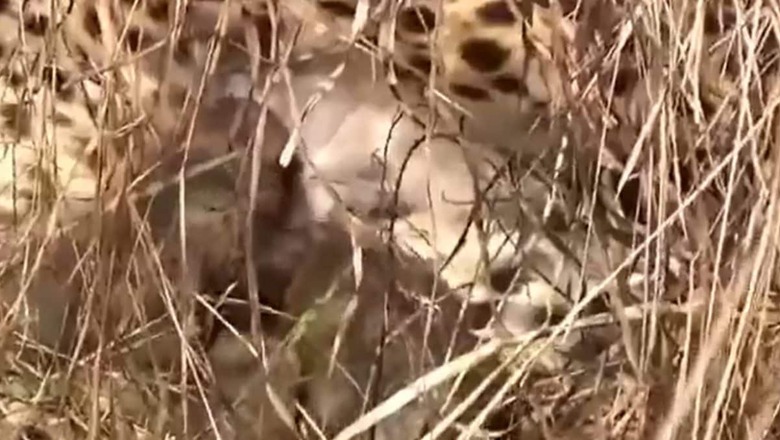
views
Weeks after Namibian Cheetah — Aasha — gave birth to three cubs, another feline, Jwala, has given birth to three cubs at the Kuno National Park in Madhya Pradesh.
Sharing this news with the public, Union Environment Minister Bhupender Yadav posted a video on X and wrote, “Kuno’s new cubs! Namibian cheetah named Jwala has given birth to three cubs. This comes just weeks after Namibian cheetah Aasha gave birth to her cubs.”
“Congratulations to all wildlife frontline warriors and wildlife lovers across the country. May Bharat’s wildlife thrive,” he added.
WATCH VIDEO:
Kuno’s new cubs!Namibian Cheetah named Jwala has given birth to three cubs. This comes just weeks after Namibian Cheetah Aasha gave birth to her cubs.
Congratulations to all wildlife frontline warriors and wildlife lovers across the country.
May Bharat’s wildlife thrive… pic.twitter.com/aasusRiXtG
— Bhupender Yadav (@byadavbjp) January 23, 2024
Namibian Cheetah Aasha gave birth to three cubs at KNP on January 3, Yadav had shared the news back then as well.
Jwala (Namibian name Siyaya) had also given birth to four cubs last March. But unfortunately, only one of them survived.
Both Jwala and Aasha were translocated to India from Namibia under Prime Minister Narendra Modi’s ‘Project Cheetah’. Notably, Aasha was among the first batch of eight cheetahs that were brought to India.
PM Modi released the first batch into Kuno National Park on his birthday on September 17, 2022. The second batch — consisting of 12 cheetahs — was flown in from South Africa last February.
However, the much-acclaimed cheetah conservation project had drawn a lot of flak over the deaths of seven of the 20 adults imported from Namibia and South Africa.
The unexpected developing of winter coats by some of the animals during the summer and monsoon season in India — in expectation of African winters (June to September) — was one of the biggest challenges faced in managing the cheetahs in the first year, officials said.
Combined with high humidity and temperatures, the winter coats caused itching, leading the animals to scratch their necks on tree trunks or the ground. The bruising from the itching led to the exposure of skin.
The exposed part of their skin then became the place where flies laid eggs, which resulted in maggot infestations and, ultimately, bacterial infections and septicemia, leading to the deaths of three cheetahs, an official explained.
“The mortalities under Project Cheetah so far have been within the expected limits. As per Cheetah Action Plan, we anticipated approximately 50 per cent mortality. Right now, 14 imported cheetahs are surviving, besides one cub born on Indian soil,” SP Yadav, additional director general of forests in the Union Environment Ministry, had said.
(With PTI inputs)


















Comments
0 comment